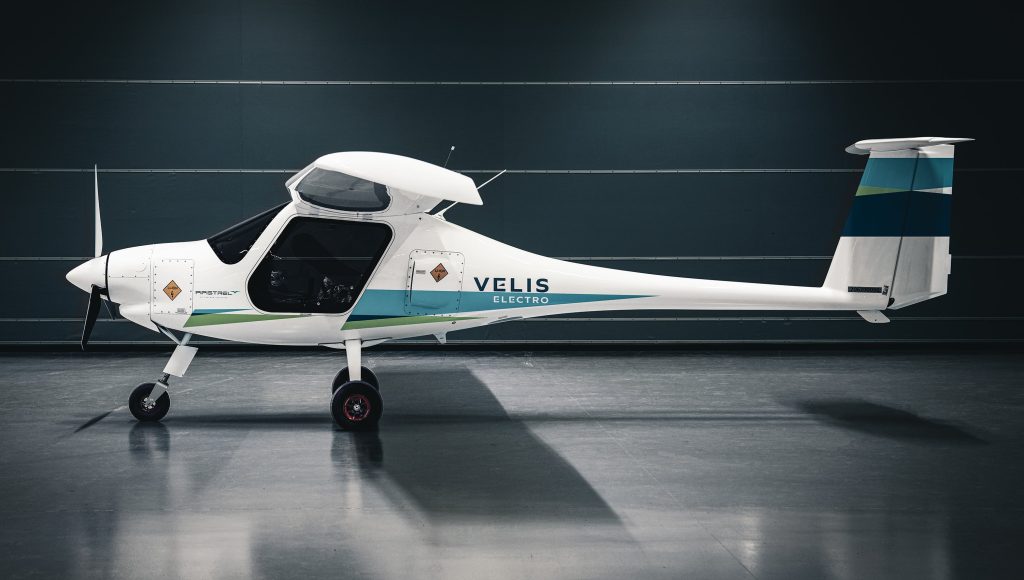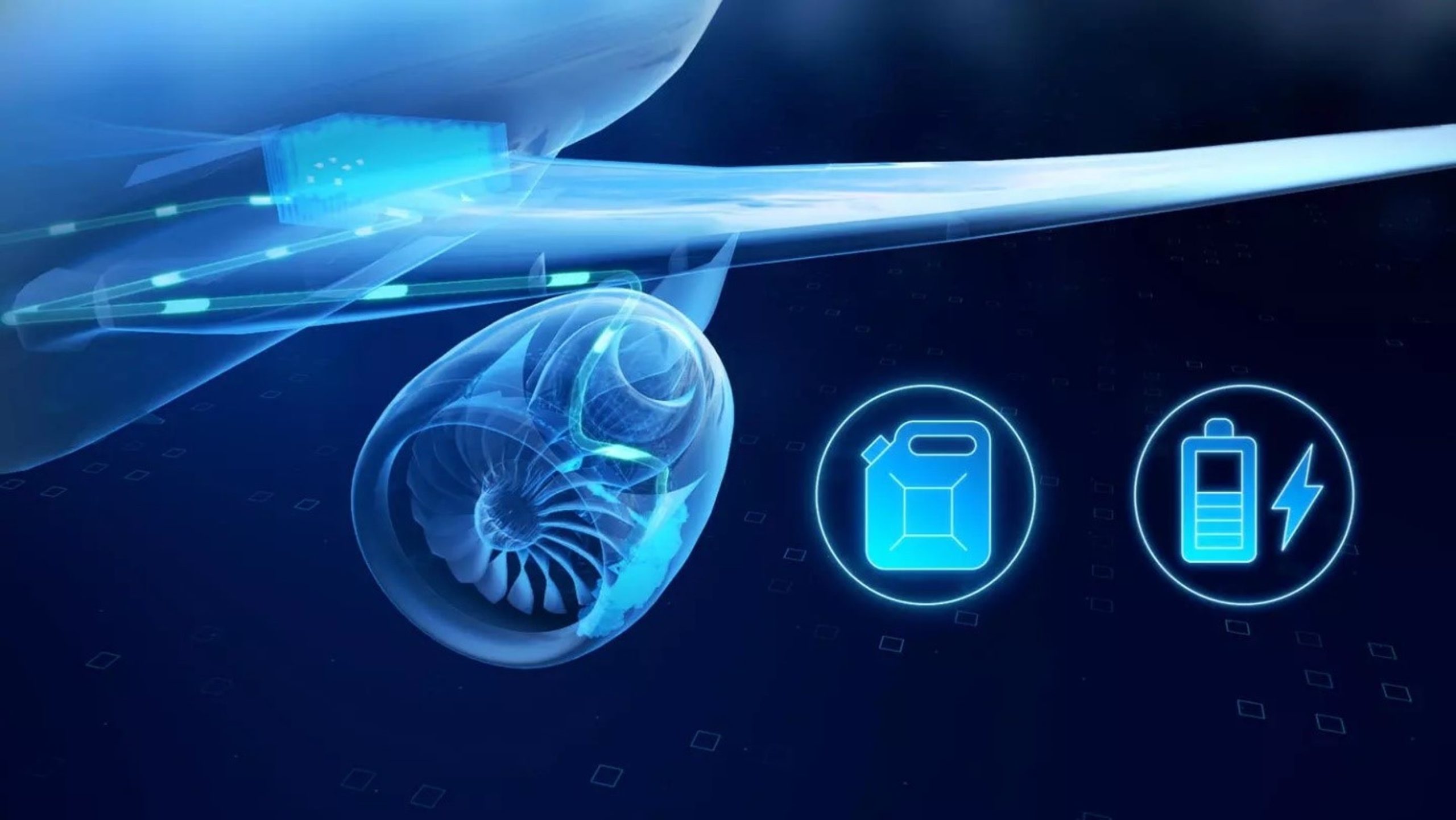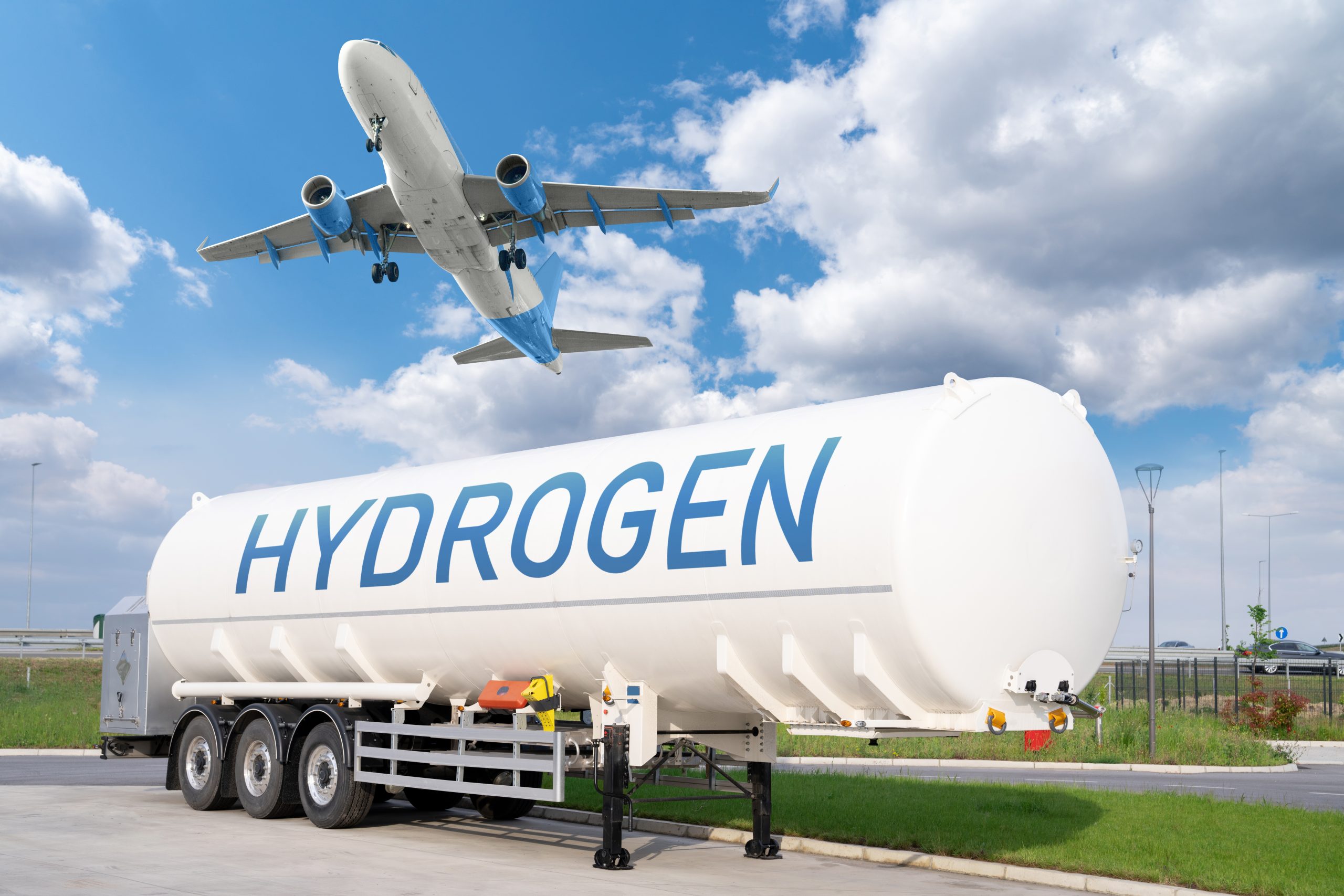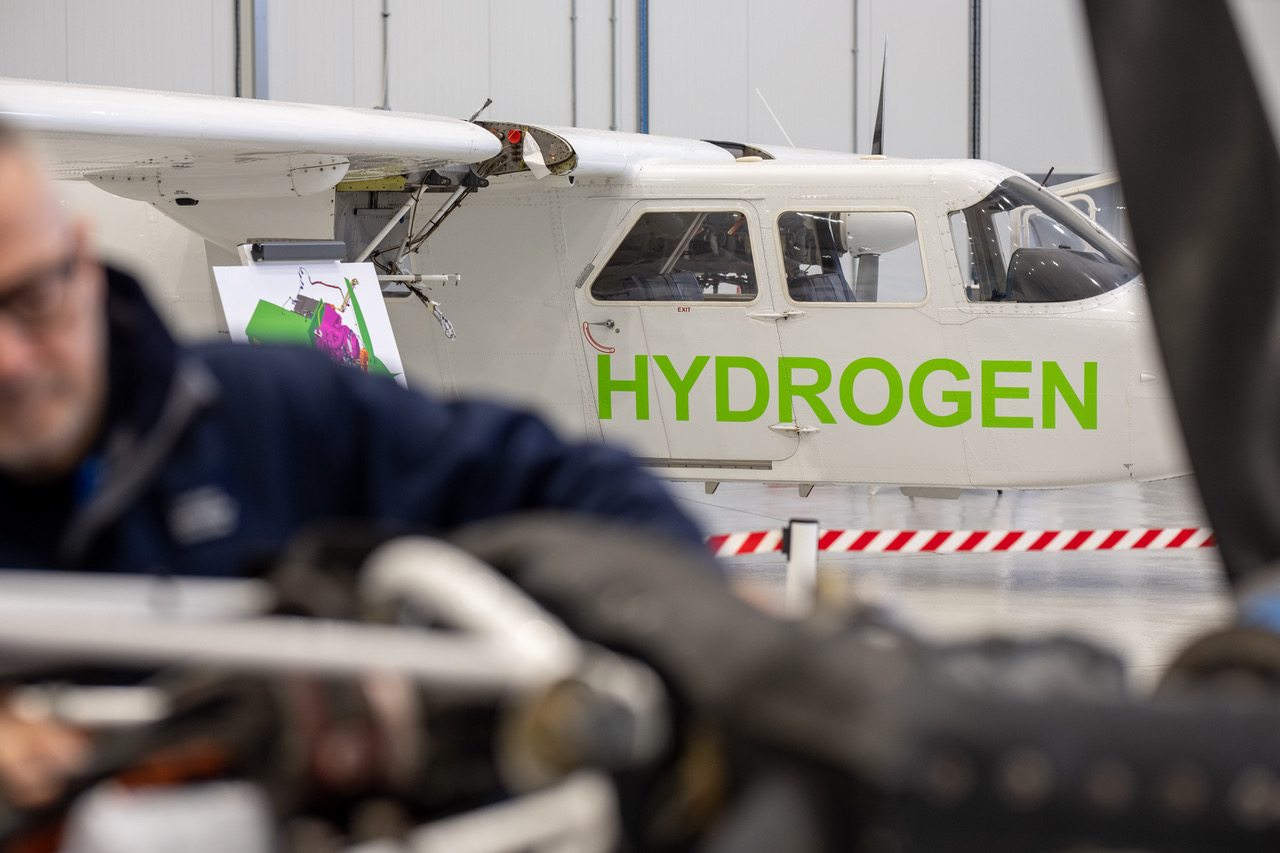As the aviation industry faces increasing scrutiny over its environmental impact, airlines and operators are under pressure to reduce their carbon footprint amid growing passenger demand. Traditional jet fuel causes emissions such as carbon dioxide, nitrogen oxides, particulates and soot – all of which are harmful to our planet. To meet global climate goals we must transition to zero-emissions solutions.
The ultimate answer to achieve that lies in hydrogen – a fuel that produces no emissions other than water and has the energy density to power larger aircraft and enable longer journeys. Widespread use of hydrogen-powered aircraft however requires a revolution in technology not seen since the advent of the jet age.
Although CAeS aims to bring hydrogen technology into commercial service this decade on small aircraft, it will take time for both the aircraft technology and the infrastructure to mature to the point where it is business as usual to climb aboard a hydrogen aircraft for a business trip or holiday.
The different technology being explored for sustainable aircraft
Hydrogen is not the only technology being explored for aviation. There are other fuel sources that can help mitigate the increase in emissions across all sectors of the aviation industry. These include battery-electric technology at the smaller end of the scale, sustainable/synthetic aviation fuels (SAF) for large aircraft and business jets, and hybrid systems. In this blog, we’ll explore the different sustainable fuel sources that can all make a difference to carbon dioxide emissions and help to pave the way for a zero emissions future of flight.
How contrails contribute to carbon dioxide emissions
Before we start, it is worth spending a little time on the subject of contrails. Although aircraft are not the worst polluters on the planet, currently contributing 2.5-3% of carbon dioxide emissions, aerospace is the only industry that pollutes at altitude.
Above about 30,000ft, the emissions from an aircraft engine cause contrails (condensation trails). These are formed when the hot air from jet engines condense in the colder atmospheric air causing ice crystals which effectively cause cirrus clouds.
In certain conditions, especially at night when the earth naturally cools by ejecting heat into space, contrails can stop heat from escaping and therefore cause a radiative warming effect. Not all contrails are harmful, but it is estimated that contrails represent over 50% of the total climate impact of an aircraft.
Also, contrails tend to last longer in the atmosphere when there is a high level of soot present. Finding alternative fuels that cause fewer harmful contrails is therefore also just as important as managing the carbon dioxide emissions.
Hydrogen Fuel for Sustainable Aircraft
There are two main ways hydrogen can power aircraft: through hydrogen-electric systems like the systems that Cranfield Aerospace Solutions is developing, and hydrogen combustion, where the hydrogen is burned in an engine very like kerosene is today.

Hydrogen-Electric aircraft
In hydrogen-electric systems, hydrogen is used in fuel cells to generate electricity that powers the aircraft’s electric motors which in turn spin the propellers. Fuel cells produce zero carbon dioxide emissions, with water vapor as the only byproduct.
Hydrogen Combustion:
In hydrogen combustion, hydrogen is burned in a specially modified gas-turbine engine to produce thrust. This process mirrors traditional internal combustion, but with hydrogen taking the place of conventional fossil fuels. Although significantly better for the environment than combusting kerosene, hydrogen combustion does produce nitrogen oxides as well as water.
Storage of hydrogen
There are currently two ways that hydrogen can be stored on an aircraft – in its gaseous form and in liquid form.
Gaseous hydrogen must be stored in very heavy, pressurised tanks and therefore is only really viable for smaller aircraft platforms (up to 19 seats) flying shorter routes (up to ~600km).
Liquid hydrogen must be stored in highly insulated tanks, the hydrogen having been cooled to -253decC. This alleviates the weight problem of gaseous tanks to some extent but it does take up four times the volume of kerosene which creates challenges for aircraft design. It does however allow the aircraft to carry significantly more fuel compared to gaseous storage solutions which is why large aircraft will need their fuel stored in liquid form.
Irrespective of how the hydrogen is stored, both hydrogen fuel cells and hydrogen combustion engines need the hydrogen fed to them in its gaseous form so from a technology point of view, they can be developed independently of the storage system to some extent.
Find out more about the challenges and impressive opportunities of hydrogen aircraft for airlines and operators. Discover all about operations, training, revitalising regional airports, aircraft performance, and the economics of hydrogen.

Hydrogen and contrails
Although the impact of hydrogen on aircraft contrails is not yet fully understood, research is currently being carried out around the impact of contrails from hydrogen fuel cell and combustion aircraft that predicts that the area of the world covered in contrails will increase by around 70% from hydrogen powered aircraft, but that ‘the expected cleaner exhaust and corresponding increase in average contrail particle sizes will result in a reduction in contrail cirrus ERF for liquid hydrogen combustion (~25%) and fuel cell (~20%) powered planes, compared to kerosene planes.’ (Harvard University).
Hydrogen’s energy density and its true zero emissions makes it a great candidate for the long-term sustainability for aviation, where electric batteries do not have the range to power larger aircraft and longer journeys. However, widespread adoption of hydrogen will require significant investments in infrastructure, including hydrogen production, storage, and refuelling capabilities. Despite these challenges, hydrogen is seen as the long-term solution that can revolutionise the way we power aircraft.
Key points for hydrogen-powered aircraft:
- Hydrogen fuel cells produce zero carbon emissions and only emit water vapour.
- Suitable for flight due to its high energy content.
- Requires significant infrastructure development, technology development and regulatory change.
- Weight and/or volume of storage is a challenge; for large aircraft this will necessitate new aircraft design
- Seen as a long-term solution for zero-emissions aviation.

Future concept for hydrogen-powered regional aircraft
Battery-Electric for sustainable aircraft
Electric battery-powered aircraft offer a solution for small aircraft, particularly for training and general aviation aircraft. These aircraft are powered entirely by batteries, eliminating the need for traditional fuel altogether.
Battery-electric aircraft produce zero emissions and are quieter than conventional aircraft. However, the current challenge lies in battery energy density – the amount of energy stored in a given battery size. Due to low energy density, the batteries required to produce the appropriate amount of power are extremely heavy.
Batteries also need to be charged regularly which means they have a relatively short life which pushes up maintenance costs. These limitations mean that electric aircraft are only best suited to small aircraft with a short range
Key points for battery-electric powered aircraft:
- Electric battery-powered aircraft produce zero emissions.
- Ideal for small aircraft, e.g. training aircraft, due to battery limitations.
- Quieter than traditional aircraft.

The Pipistrel Velis Electro – the first ever type-certified, electric-powered aircraft, fully approved for pilot training in Day VFR operations in more than 30 countries
Sustainable Aviation Fuel (SAF) for aircraft
While true zero emissions aircraft represent the future, Sustainable Aviation Fuel (SAF) offers more immediate, albeit smaller, climate impact for larger aircraft.
There are two types of Sustainable Aviation Fuel (SAF). The first, biofuel, is derived from renewable sources such as waste oils, agricultural residues, and even algae. The second type, synthetic fuel (also known as power-to-liquid), is produced by combining green hydrogen with carbon dioxide (ideally) captured from the air. Synthetic fuels are needed because bio-based sources alone cannot meet the demand for SAF. Both types are classified as “drop-in fuels,” meaning they can be used in existing jet engines, making them an appealing choice for airlines aiming to reduce emissions now without needing to replace their entire fleet.
It should be noted however that SAFs can only currently be used as a blended fuel of up to 50% with conventional jet fuel for commercial applications. The reason for this is that SAFs do not contain “aromatics” – substances found in jet fuel that help to lubricate the engines and fuel systems but that also emit particulates into the atmosphere. For a full transition to SAF, aircraft engines and fuel systems will need to be redesigned and re-certified to use 100% Power to Liquid SAF.
Challenges for Sustainable Aviation Fuel
Burning SAF in a jet engine still releases approximately the same amount of carbon dioxide into the atmosphere as an engine running on conventional fuel. However, SAF has the potential to reduce lifecycle carbon emissions by up to 80% which is why it is considered to be the better option for the environment. The two key challenges with SAF are scaling up production to meet global demand and the price. Currently, SAF makes up less than 1% of total aviation fuel use, but with increased investment and government support, it could play a major role in decarbonising aviation over the next few decades. The price of SAF is problematic for airlines wanting to switch to a more environmentally friendly alternative however, with biofuels costing 3-4 times the price of kerosene and synthetic fuels being around 10 times the price.
Key points for SAF powered aircraft:
- Although not zero emissions, SAF can reduce lifecycle carbon emissions by up to 80%.
- Can be used in existing aircraft engines (up to 50% blend).
- Derived from renewable sources like waste oils and agricultural residues or created as a synthetic fuel, known as a ‘power to liquid’.
- Production needs to be scaled up to meet industry demand.

Hybrid-Electric systems for sustainable aircraft
Hybrid-electric aircraft are seen by some as a stepping stone to decarbonising aviation whilst the technology and infrastructure for true zero emissions solutions mature, with the potential to reduce aircraft CO2 emissions by up to 5%. In a hybrid aircraft setup, an aircraft draws on multiple energy sources during flight, either simultaneously or alternately. By blending energy sources such as jet fuel or sustainable aviation fuels with electricity, the system optimises overall energy efficiency and reduces fuel consumption.
This approach is particularly useful for those looking to reduce emissions without waiting for more advanced technologies to mature.
The basic principle of hybrid technology is to have batteries working in combination with conventional engines in a way that allows each technology to be optimised for its operations, for example, using batteries for take-off and a conventional engine for cruise where it can then be sized for cruise power, leading to a more optimised engine and less overall fuel burn.
Key points for hybrid-electric powered aircraft:
- Hybrid-electric aircraft combine traditional and electric power to reduce emissions.
- Best suited for regional routes with shorter flight distances.
- Acts as a transitional technology until true zero emissions aircraft become mainstream.

Conclusion: Preparing for Aviation’s Sustainable Future
The future of aviation is green, and the path to true zero-emissions aircraft lies in adopting sustainable fuel options like hydrogen, electric batteries, SAF, and hybrid systems. Each of these technologies offers unique benefits and challenges, but together they represent a promising future for cleaner skies. Airlines and operators that begin exploring these fuel types today will not only reduce their environmental impact but also gain a competitive edge in a rapidly changing industry.
By embracing new fuel technologies, airlines and operators can play a pivotal role in transforming aviation into a more sustainable mode of transportation. Whether through hydrogen-powered flights, electric aircraft, or SAF for current engines, the journey to zero emissions has already begun. The question now is not if airlines and operators will make the switch, but when.



